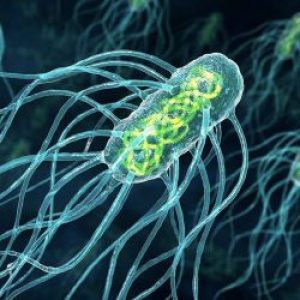Potential of Livestock By-Products in Agriculture: Opportunities and Risks

A key step before using PPP is to analyze their chemical composition, which includes identifying heavy metals (such as arsenic, mercury, lead, and cadmium), pesticides, and pathogens. Specialists at the Volgograd branch of the Federal Center for Assessment of Safety and Quality of Agricultural Products conducted 132 studies on 13 types of PPP. These tests are aimed at detecting pathogens such as salmonella , as well as helminth eggs and larvae. All studies must be confirmed in accredited laboratories to ensure their reliability. If PPP meets established standards, they can be safely used in agriculture.
The development of processing technologies for PPZ plays an important role in their safe use. Experts have created six technical conditions for the processing of by-products obtained from cattle, small ruminants and horses, which contributes to the standardization of processes and quality control of fertilizers. Processing methods such as composting and biogas technologies help reduce the level of pathogenic microorganisms and increase the nutritional value of fertilizers.
Despite the benefits of using PPZh, improper handling can lead to serious environmental consequences. Unprocessed or insufficiently processed waste can pollute soil and water resources, threatening not only human HEALTH but also ecosystems. Therefore, compliance with all standards and rules for handling PPZh is critically important. This includes not only laboratory studies, but also monitoring environmental safety at all stages of using these products.
Thus, livestock by-products can become a valuable resource in agriculture, but their effective use requires a careful approach and compliance with all necessary standards. Only a comprehensive approach to processing and quality control will minimize risks to human health and the environment, as well as maximize the potential of these resources to improve soil fertility.
Read together with it:
- Personal responsibility, modernization. What measures is the Ministry of Agriculture and Food taking to reduce mortality?October 27, MINSK . To reduce cattle mortality, the Ministry of Agriculture and Food is focusing on disease prevention, infrastructure modernization, and increased accountability at all levels of government. Ivan Smilgin, Deputy Minister of Agriculture and Food and DIRECTOR of the Department of Veterinary and Food Surveillance, spoke to a BELTA correspondent about which measures are producing tang...
- Новые горизонты сотрудничества: Россия и Аргентина обсуждают совместный доступ на рынки продукции животного происхожденияОдной из ключевых тем конференции стал контроль за производством ветеринарных препаратов в Аргентине. Аргентинская сторона представила свою систему контроля, включающую Управление ветеринарных продуктов и Управление лабораторий животных. Эти организации обеспечивают высокие стандарты безопасности, так как каждая производственная единица подвергается проверкам каждые 3-5 лет и зарегистрирована в ин...
- Цены на мясные продукты в России продолжают расти: анализ причин и прогнозыАналитики связывают это с перераспределением спроса, поскольку покупатели стали больше покупать курятину из-за удорожания других видов мяса. Производство птицы увеличилось, однако ожидаемое восстановление цен после весеннего падения пока еще не произошло. Тем временем, несмотря на общий рост цен на мясо, яйца сохраняют стабильные расценки. Прогнозы на будущее остаются неопределенными и зависят от ...
- Матричные РНК-вакцины от COVID продлили жизнь тяжелых раковых больныхМатричные РНК-вакцины против коронавируса продлили жизнь пациентам, больным раком в самой тяжелой, четвертой стадии, сообщает The Washington Post. К такому выводу пришли исследователи Онкологического центра имени М. Д. Андерсона Техасского университета и Университета Флориды. «Эти данные невероятно интересны, но они должны быть подтверждены в ходе третьего этапа клинических испытаний», — заявил од...
- The quarantine for farm animals due to leukemia has been lifted in the village of Gusevo.As of October 21, 2025, the restrictions were lifted due to an improvement in the clinical situation on farms. Specialists conducted the necessary laboratory tests and treatment procedures, confirming the absence of infected animals. As a result, livestock owners can now freely sell MILK and MEAT , as well as transport animals outside their communities.......
- Golden Autumn 2025: Volgograd Region Expands CooperationAt the 27th Russian Agro-Industrial Exhibition "Golden Autumn 2025," the Volgograd Region signed eight cooperation agreements. The Volgograd Region Committee on Agriculture and the Russian self-regulatory organization of audit unions of agricultural cooperatives, the Agrokontrol Union, signed a bilateral agreement. The parties will jointly address issues related to the development of the region's ...
- Exports of animal products from the Penza region are growing rapidly.In addition, 438 tons of confectionery products, as well as 240 tons of dairy products, were exported from the region to Oman, Iraq, and other countries. All goods underwent laboratory testing at accredited veterinary institutions to confirm their safety. After loading, specialists compiled veterinary and sanitary inspection reports and replaced previously issued veterinary certificates with stand...
- Rosselkhoznadzor has cancelled 189 declarations for livestock products in the Urals.Of the revoked declarations, 91 were for dairy products, 51 were for MEAT, 13 were for fish, and 14 were for feed. The reasons for terminating the declarations were incomplete laboratory tests and serious violations of technical regulations. For example, on September 18, a declaration for frozen semi-finished meat products produced by Ural-Snab in the Chelyabinsk region was revoked due to the disc...


